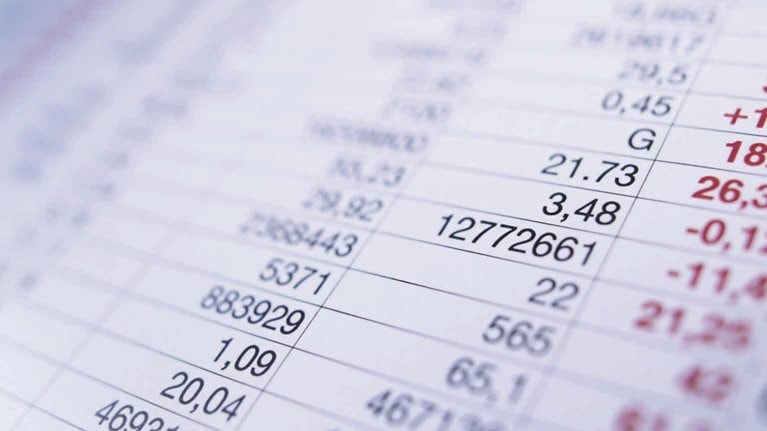A central pillar of the Design to Value methodology, Cleansheet cost engineering helps companies to control costs, boost margins and give customers more of what they want. This article is the third of a four-part series on the Cleansheet cost engineering function published in 2014-15. See Part 1 “The Cleansheet cost engineering function: Introduction”1 for the case on why strong cost engineering capabilities are important.
In parts one and two of this series, we looked at why cost engineering is increasingly important to many companies, and at how leading companies develop and retain the relevant skills and capabilities. In this article, we will turn our attention to the physical and IT infrastructure needed to work effectively.
Space
An effective infrastructure for Cleansheet cost engineering starts with a home: a physical space where the members of the department can work together, learn from each other and drive the development of the function as a group. Cost engineering involves a combination of deskwork, collaboration and hands-on interaction with products, and the department’s space should reflect this. A workshop area close to the main desks and meeting rooms is needed for product teardowns and collaborative idea generation sessions (exhibit). In many cost engineering departments, the workshop also becomes the department’s “showroom” and training facility. It demonstrates the progress made to date, and helps transfer knowledge and skills to other functions and departments.
The workshop should have enough space to allow side-by-side teardown and comparison of anything from complete products and packaging to individual fasteners or ingredients.
Depending on the industry, the department might also need facilities for product and materials testing, or chemical analysis and formulation. The workshop also needs space to store products and materials before and after analysis. Individual cost engineers should also have personal storage space where they can keep relevant parts and products to act as references for determining cost drivers and best design practices.
Exhibit

Calculation tools
Cleansheet cost modeling is a fundamental cost engineering activity. Whether they want to identify and prioritize improvement areas on existing products or determine the target cost for completely new ones, companies need to understand exactly how product cost accrues through the value chain. Cleansheet cost models provide a bottom-up picture of a product’s cost structure based on the materials, resources, labor and equipment used in its manufacture and distribution. Detailed cost models take account of sources of materials, process steps, machines, tools, operators, throughput, yield, investment amortization, overhead and profit allocation. They consider the cost of suppliers and sales channel partners, of logistics and of inventory levels. Cost engineering departments often calculate scenarios to compare current performance with a theoretical future state after the implementation of cost and/or design improvement measures, or with a “greenfield” best case if the value chain could be built again from scratch.
The Cleansheet methodology is generic. The result should be the same if calculated on a sheet of paper, in a spreadsheet or by a specialized software tool. Most dedicated cost engineering departments adopt the last approach, however. Specialized tools establish a common language and a standard calculation methodology, making it easier to divide the work between personnel, to compare different analyses and to reuse earlier models. They should also enforce separation between the calculation itself and the supporting cost items to make it easier to keep models up to date as factor costs and currency rates fluctuate over time. To maximize productivity, specialized cost modeling tools often offer a number of other capabilities:
- They may accelerate and simplify the execution of some more complex calculations, like the modeling of different volume scenarios or manufacturing footprint options.
- They allow the definition of variants of a base product, making it easier for companies to deal with scenarios like mobile phones manufactured in different regional versions, where the same basic device may be supplied with various radio chipsets, charging cables or packaging.
- They may allow the creation of cascading sequences of sub-Cleansheets that simplify the modeling of complex products and subassemblies. A complex assembly like a car seat or USB modem may be built up from ten or more Cleansheets containing tens or hundreds of items. The best systems will allow all these to be updated in a single click when key input data changes.
- They usually allow data and reports be imported and exported in a number of different formats, aiding the speed, accuracy and clarity of communication with the people in the wider organization and the supply chain, who may not have access to the original tool.
- They may permit the integration of even more specialized modeling tools that can improve the ease or accuracy of modeling things like commodity prices.
Data
Alongside robust calculation tools, a cost engineering department also requires a good database. This database should contain market prices for resources and benchmarks for manufacturing processes including cycle times, yields and overhead rates. A typical set of cost categories for a Cleansheet database includes:
- Material - raw material and purchased (catalog of off-the-shelf) parts
- Logistics costs - transportation services by distance, carrier, load factor and country
- Labor rates - cost of labor from unskilled to skilled, from shop floor to management levels
- Machine rates - broken down into investment, amortization time, consumables, floor space consumption to model different capital cost and utilization scenarios
- Tooling costs - perishable and non-perishable
- Consumables, like cost of energy, lubricants, fluids and gases
- Overhead rates by resources, geographies, production volumes, industries and tier level.
Initially, many cost engineering departments build their database by drawing on the knowledge and experience of their own teams and of external resources. As the department matures, extra sources of data, obtained from supplier visits or quotations with cost breakdowns for example, can be used to extend and update the database.
Keeping a database up to date, and ensuring the quality and validity of new data requires continual work. Most companies find it necessary to assign dedicated resources to this effort and to adopt a systematic process for the capture, review and approval of new data. By keeping a single, central-cost database companies can ensure cost engineering staff makes use of consistent, up-to-date information. The best companies also store cleansheets in a similar central repository to facilitate updating and reuse.
Even the most sophisticated modeling tools and cost databases can fail to deliver impact if they are not used appropriately, however. We have seen companies forced to learn this truth the hard way—when they have taken sophisticated models into sourcing negotiations, for example without proper briefing or cost engineering support, only to find that their inability to explain the assumptions behind those models destroys their credibility in the eyes of the supplier.
* * *
Avoiding issues like this requires tight integration between the purchasing and the cost engineering department and other operations functions. The nature of that integration will be subject of the final article in this series.
About the authors: Alexander Kienreich is a senior expert in McKinsey’s Vienna office, and Stephan Mohr is a master expert in the Munich office.

